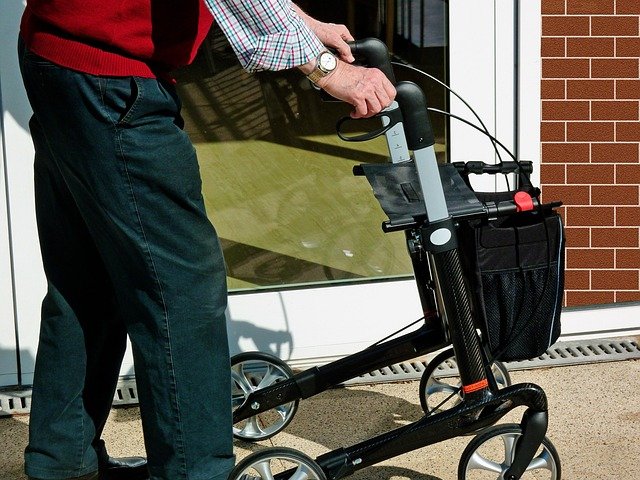Mobile Stair Lifts Without Installation: Safe, Simple, and Ready to Use
Navigating stairs can become challenging for many individuals, particularly seniors or those with mobility limitations. Traditional stairlifts often require permanent installation, structural modifications, and significant investment. However, mobile stair lifts provide an innovative alternative that requires no installation while still offering safe and effective mobility solutions. These portable devices can be immediately operational and moved between locations, making them practical for various situations from temporary needs to rental properties.

What Are No-Installation Stair Lift Solutions?
No-installation stair lift solutions are portable mobility devices designed to help individuals safely navigate staircases without requiring permanent structural modifications to the home. Unlike traditional stairlifts that attach to walls or stair treads, these mobile options operate independently with rechargeable battery systems. They typically come in two main varieties: portable stair climbers that a caregiver operates from behind the user, and self-propelled models that individuals can operate independently with minimal assistance.
These devices arrive fully assembled or require minimal setup, making them immediately available for use. The absence of installation requirements means no waiting periods, no construction disruptions, and no permanent changes to the home environment. This makes them ideal for temporary situations, rental properties, or homes where permanent modifications aren’t feasible or desired.
How Mobile Stair Lifts for Seniors Provide Independence
For many seniors, maintaining independence is crucial for quality of life and mental wellbeing. Mobile stair lifts offer significant advantages in this regard by removing one of the most common barriers to home mobility—stairs. These portable solutions enable older adults to safely access all levels of their homes without relying on constant assistance from family members or caregivers.
The independence that mobile stair lifts provide extends beyond just physical mobility. By eliminating the need to relocate to single-level accommodations or care facilities, seniors can continue living in their cherished homes surrounded by familiar settings and memories. This ability to “age in place” has been shown to have positive impacts on mental health and overall wellbeing for many older adults.
Additionally, the simplicity of these devices means that with minimal training, seniors and their occasional caregivers can quickly become comfortable with their operation. Many models feature intuitive controls, safety mechanisms, and comfortable seating that accommodate various user needs and physical limitations.
Portable Devices for Home Mobility: Key Features and Benefits
Mobile stairlifts come with several features that make them practical alternatives to permanent installations. Their most significant advantage is portability—many models fold compactly for storage or transport in a standard vehicle, allowing users to take them when visiting family or traveling. This versatility makes them suitable for multi-location use without purchasing multiple units.
Battery operation is another essential feature, with most units providing 15-30 stair climbs per charge, sufficient for typical daily use. Modern lithium-ion batteries offer improved performance with faster charging times and longer battery life compared to older models. Most units include charging stations that can be placed anywhere convenient, eliminating the need for special electrical connections.
Adaptability across different staircase configurations represents another crucial benefit. While permanent stairlifts must be custom-fitted to specific staircases, many portable models work effectively on various stair widths, heights, and configurations. Some advanced models even handle curved staircases or intermediate landings with minimal adjustments.
Weight capacity has also improved significantly in newer models, with many portable stairlifts now accommodating users up to 300-350 pounds. This makes them viable options for a broader range of individuals with mobility challenges.
Safety Considerations and Proper Usage
Safety remains paramount with any mobility device, and mobile stairlifts incorporate numerous features to ensure user protection. Most models include anti-tip mechanisms, secure harness systems, and emergency stop buttons. Non-slip surfaces on seating areas and footrests prevent sliding during operation, while speed governors ensure consistent, controlled movement regardless of stair steepness.
Proper training is essential for both users and assistants. Most manufacturers provide comprehensive training materials, including video tutorials and detailed user manuals. Some companies even offer in-home demonstrations to ensure proper technique. Regular maintenance checks are also important—inspecting wheels, battery connections, braking systems, and securing mechanisms before each use helps prevent potential malfunctions.
Despite their advantages, mobile stairlifts are not appropriate for every situation. Extremely narrow staircases or those with unusual configurations may present challenges. Additionally, most assistant-operated models require a capable caregiver with sufficient strength to manage the device safely. Users should always consult healthcare professionals to determine if a mobile stairlift meets their specific mobility needs.
Comparison of Leading Mobile Stair Lift Options
The market offers several mobile stairlift options, each with distinct features and capabilities catering to different needs. Understanding the differences can help consumers make informed decisions based on their specific requirements.
| Model | Type | Weight Capacity | Key Features | Price Range |
|---|---|---|---|---|
| Scalamobil S35 | Caregiver-operated | 300 lbs | Climbs straight and spiral staircases, removable battery pack, ergonomic controls | £3,500-£4,200 |
| LG2020 Stair Climber | Caregiver-operated | 350 lbs | Lightweight aluminum construction, one-button operation, works on carpeted stairs | £2,800-£3,400 |
| Freedom Stair Climber | Self-propelled | 275 lbs | User can operate independently, compact design, automatic braking system | £5,200-£6,500 |
| Liftkar PT-S | Caregiver-operated | 330 lbs | Quick-change battery system, adjustable speed settings, folds for transport | £3,900-£4,700 |
| Mobile Stairlift | Caregiver-operated | 325 lbs | Universal stair compatibility, minimal maintenance required, intuitive controls | £3,200-£3,800 |
Prices, rates, or cost estimates mentioned in this article are based on the latest available information but may change over time. Independent research is advised before making financial decisions.
When selecting a mobile stairlift, consider factors beyond price, such as the specific staircase configuration in your home, the availability of a capable assistant if needed, storage space requirements, and transportation needs. Many suppliers offer demonstration services or short-term rentals, allowing users to test devices before purchasing—an invaluable opportunity to ensure compatibility with both user needs and home environment.
Mobile stairlifts represent a practical solution for those seeking improved home mobility without permanent modifications. Their combination of safety features, portability, and immediate usability makes them an increasingly popular choice among seniors and individuals with mobility challenges. By understanding the available options and carefully considering individual needs, users can select a device that enhances independence while ensuring safe navigation between floors.




